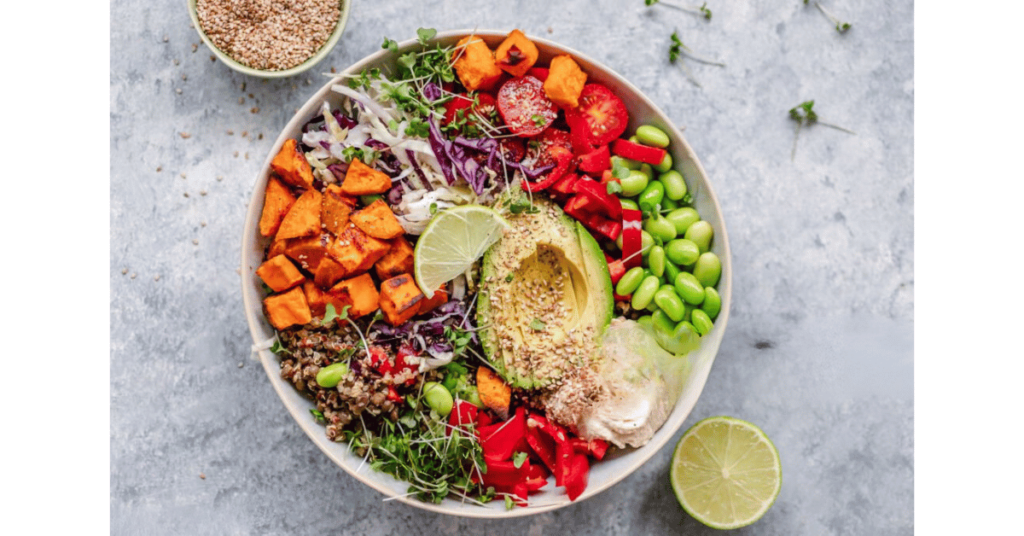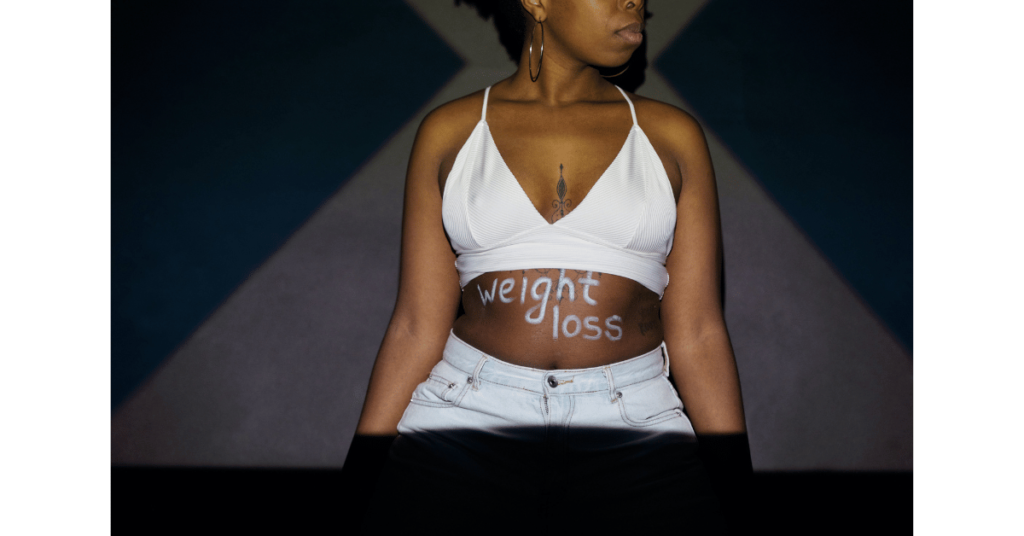9 out of 10 South Africans Are Entirely Wrong About WFPB

Here’s a guide that explores that 9 of 10 South Africans are entirely wrong about WFPB.
And…
Do you ever feel like everyone around you has misconceptions about healthy eating?
South Africa, renowned for its braais and delectable curries, is a perfect setting for exploring the benefits of plant-based diets.
We’ve all heard the whispers:
“Isn’t that just a fad for celebrities?” or “You’ll miss all your protein!”
But what if I told you that embracing a Whole-Food, Plant-Based (WFPB) diet could help you take control of your health and unlock a healthier, happier you?
The truth is that most South Africans are misinformed about WFPB.
In this blog post, we’ll debunk the myths and show you why a plant-based approach might be perfect for your lifestyle.
We’ll explore the benefits. We will address the challenges.
Discover how to prepare delicious, cost-effective WFPB meals using locally available South African ingredients.
Get ready to ditch the misconceptions and surprise yourself with the power of plants!
Common Misconceptions About WFPB Diets in South Africa

South Africa has a vibrant culinary scene. But finding healthy food can be tricky.
When it comes to WFPB diets, misconceptions run rampant.
Let’s address some of the most common ones:
Fad Diet for the Elite
Many believe WFPB is just a passing trend for celebrities.
The truth is that WFPB promotes a lasting shift. It’s towards whole, unprocessed plant foods.
It’s not about deprivation but about building a healthy foundation for your life.
Nutrient Deficiencies
Worried about missing essential nutrients, such as protein or iron?
Fear not!
Lentils, beans, chickpeas, and tofu are affordable staples in South Africa. They are full of protein and iron.
Leafy greens and fortified plant milk provide calcium. Fruits and vegetables give a range of vitamins and minerals.
Expensive and Inaccessible
The myth persists that only the wealthy and celebrities can afford WFPB diets.
Contrary to popular belief, South Africa’s diverse plant kingdom offers many affordable options for a WFPB diet.
Think beyond fancy superfoods. Embrace staples like maize (mielies), sweet potatoes, butternut squash, and in-season fruits.
With some planning, you can create delicious and nutritious WFPB meals on a budget.
Bland and Tasteless
Who says plant-based means boring?
South African cuisine thrives on flavourful spices and herbs.
Imagine a tasty lentil bobotie.
Or a vibrant veggie potjiekos.
Both are WFPB-friendly and bursting with taste.
With the right spices and a dash of creativity, you can create delicious and nutritious WFPB meals that will never disappoint your taste buds.
What about the benefits of WFPB diets?
Benefits of WFPB Diet: A Blossoming Garden for Your Health
Unleash a blossoming garden of health in your body with the myriad benefits of WFPB diets.
Switching to a WFPB diet isn’t just about trendy hashtags.
It’s about growing a vibrant garden of health in your body.
Here’s a taste of what you can expect:
Thriving Heart
WFPB diets are champions for heart health.
It focuses on fruits, vegetables, whole grains, and legumes.
This focus naturally lowers saturated fat intake, a contributing risk factor for heart disease.
Lower cholesterol levels and improved blood pressure are additional perks.
Weight Management Made Easier

WFPB meals are full of fibre. It keeps you full longer and reduces cravings.
This diet can help with weight management. Plant-based foods are naturally lower in calories.
This low-calorie effect can also help with weight loss goals.
Taming the Blood Sugar Rollercoaster

WFPB diets tend to have fewer refined carbs and sugars. These can devastate blood sugar levels.
This diet can help those with diabetes or prediabetes. It promotes better blood sugar control.
A Gut Feeling of Goodness
Our gut microbiome thrives on a diverse range of plant-based foods.
WFPB diets provide many prebiotics. These are food for good gut bacteria. They also provide fibre, which promotes a healthy gut.
A healthy gut facilitates a robust immune system and well-being.
Beyond the Plate
The benefits extend beyond physical health.
Many people testify about increased energy levels, improved mood, and better sleep on a WFPB diet.
WFPB is a holistic approach to your health and wellness that nourishes your body and mind.
WFPB Done Right in South Africa: A Local Twist on a Global Trend
South Africa’s vibrant food culture is the perfect backdrop for a tasty and sustainable WFPB lifestyle.
Here’s how you can embrace WFPB with a local twist:
Embrace Local and Seasonal Produce
Support local farmers’ markets. You can explore the bounty of seasonal fruits and vegetables that South Africa has to offer.
Think of plump tomatoes in summer. Think of vibrant butternut squash in winter. And a rainbow of leafy greens year-round.
Seasonal produce is budget-friendly. It also has the best flavour and nutrition.
Revamp Your Braai Favourites
South Africans love their braais. WFPB does not mean giving up tradition.
Marinate tofu or tempeh for a smoky, protein-packed alternative to boerewors.
Grilled vegetables, such as peppers, onions, and mielies (corn), can add pops of colour and flavour.
Don’t forget the braai bread – a whole wheat version makes a perfect accompaniment.
Repurpose Traditional Dishes
You can adapt many South African dishes to be WFPB-friendly.
Think of creamy lentil soup, not creamy tomato soup. It uses coconut milk for richness.
Replace meat in a traditional potjiekos with a mix of chickpeas, sweet potato, and corn. This mixture makes a hearty and tasty stew.
Get creative and explore the endless possibilities!
Sample South Africa WFPB Meal Plan (Budget-Friendly)
Breakfast
Pap and lentils with chopped tomato and spinach
Lunch
Chickpea and veggie curry with brown rice
Dinner
Sweet potato and black bean burgers on whole-wheat buns with a side salad
Snacks
Fresh fruit, nuts, and seeds, homemade trail mix
With some planning, you can make a tasty and healthy WFPB journey. It will celebrate the flavours of South Africa.
Addressing Challenges: Making WFPB Work for Your South African Lifestyle
Transitioning to a WFPB lifestyle in South Africa can be exciting.
But there might be some hurdles along the way.
Here’s how to navigate some common challenges:
Social Gatherings and Family Meals
Sticking to WFPB at social events or family gatherings can feel tricky.
Here are some tips:
Tip #1: Offer to bring a tasty WFPB dish to share. It shows how versatile plant-based food is.
Tip #2: Communicate your dietary choices politely but firmly.
Tip #3: Focus on enjoying the company and conversation. Don’t feel pressured to eat something you don’t like.
Planning and Preparation
A little planning goes a long way with WFPB.
Here are some helpful strategies:
- Dedicate time each week to meal planning and preparing. This planning includes chopping vegetables and cooking grains in bulk.
- Use leftovers creatively for lunches or quick dinners.
- Explore online resources and cookbooks for South African WFPB cuisine. Use them for inspiration and guidance.
Remember, change takes time.
Be patient with yourself. Celebrate your progress.
Feel free to ask for help in online communities or consult a dietitian specializing in plant-based diets.
Unveiling a South African WFPB Twist: Spicy Sweet Potato Fritters
South Africa’s love affair with fritters (frikadelle) is undeniable.
But what if you could enjoy these golden morsels in a WFPB version?
Look no further!
Spicy Sweet Potato Fritters Recipe
These Spicy Sweet Potato Fritters are tasty and budget-friendly. They are a great way to add more plant-based protein and vibrant flavours to your diet.
Ingredients:
- Two large sweet potatoes, grated
- 1 cup of cooked lentils, mashed
- 1/2 cup chopped red onion
- 1/4 cup chopped fresh coriander
- One green chilli pepper, finely chopped (adjust for spice preference)
- One tablespoon of chickpea flour
- One tablespoon of nutritional yeast (optional, for a cheesy flavour)
- One teaspoon of ground cumin
- 1/2 teaspoon smoked paprika
- Salt and black pepper to taste
- Coconut oil for frying
Instructions:
- Grate the sweet potatoes and place them in a colander. Rinse them with cold water to remove excess starch. Use a clean kitchen towel to remove as much moisture as possible.
- In a large dish, mix the grated sweet potato and mashed lentils. Add the red onion, coriander, chilli pepper, chickpea flour, and optional nutritional yeast. Also, add the cumin, paprika, salt, and pepper. Mix well until everything is evenly incorporated.
- Heat a frying pan with coconut oil. Once hot, scoop out heaping tablespoons of the fritter mix and flatten them slightly with the back of a spoon.
- Fry the fritters for 3-4 minutes per side or until golden brown and crispy. Drain the excess oil on paper towels.
- Serve warm with your favourite dipping sauce. Options include spicy tomato chutney, cooling yoghurt raita (use plant-based yoghurt for a WFPB option), or just lemon juice.
These cakes are perfect for a snack, appetizer, or a light lunch with a side salad.
They’re full of flavour and nutrients. They also have the familiar comfort of a South African classic. And they have a WFPB twist!
Bonus Tip
Leftover fritters can be stored in the refrigerator for up to 3 days. Reheat gently in a pan or oven for a quick and satisfying meal.
Deepen Your WFPB Journey in South Africa: Resources to Explore
The world of WFPB is vast and exciting!
Here are some resources to help you explore your plant-based journey. They have a South African twist:
Cookbooks
Explore cookbooks specifically focused on South African WFPB cuisine.
These resources offer tasty recipes. They also have meal plans and guidance tailored to local ingredients and flavours.
Websites and Bogs
Dive into the wealth of information available online.
Look for South African websites or blogs dedicated to WFPB living.
They often provide recipes, tips, and inspiration. These help with navigating a plant-based lifestyle in your local area.
Social Media Communities
Connect with like-minded people. Join South African WFPB communities on Facebook, Instagram, or other social media.
Ask questions and share your experiences. Get inspiration from others on their plant-based journeys.
Registered Dietitians
Consider consulting a registered dietitian familiar with plant-based diets.
They can give you personal guidance. They ensure you meet your needs in a whole-food, plant-based diet.
Remember, this is a starting point!
Use these resources. Embrace the lively world of South African plant-based food. You can create a WFPB lifestyle. It will be tasty and sustainable and honour your local food’s rich flavours and traditions.
Conclusion
We conclude that 9 out of 10 South Africans are entirely wrong about WFPB.
A WFPB approach means something other than sacrificing that vibrancy.
We’ve debunked the myths.
We’ve explored the benefits.
We’ve even shown how to adapt WFPB to use local ingredients.
Remember, this is your journey.
Embrace the exploration, experiment with flavours, and find what works best.
Plenty of tasty and healthy plant-based options await you in South Africa.
So, drop the lies. Embrace the power of plants. They will help you grow into a healthier, tastier you!
Ready to take the first step?
Explore the earlier-mentioned resources. Ask questions in the comments below.
We’re all on this journey together!f
